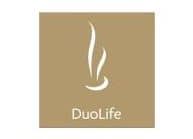
Supplements Containing Diindolylmethane (DIM): Exploring Advantages, Dietary Sources, and Impacts on Women’s Well-being.
Maya Angelou’s timeless poem, “Phenomenal Woman,” has always held a special place for me, serving as a source of empowerment that beautifully captures the essence of the female journey across various life stages.
This article delves into the fascinating realm of Diindolylmethane (DIM), a compound derived from cruciferous vegetables, with a focus on its potential impact on women’s health. DIM’s versatile attributes, including its influence on estrogen receptors, detoxification pathways, and remarkable anti-inflammatory properties, make it a subject of significant interest.
The narrative explores the intricate landscape of women’s health, where hormonal imbalances play a pivotal role in several common issues. From cortisol and estrogen to progesterone, testosterone, and blood sugar hormones, these imbalances contribute to conditions such as menstrual irregularities, polycystic ovarian syndrome, and estrogen dysregulation. The latter is particularly implicated in various health concerns like PMS, endometriosis, fibroids, and an increased risk of breast cancer.
As women approach the transformative phase of menopause, hormonal shifts become pronounced, necessitating additional support. Here, the article underscores the importance of cruciferous vegetables rich in DIM, emphasizing their role in a well-balanced diet. The impact of cooking methods on DIM content further underscores the nuanced relationship between food choices and health outcomes.
Research findings on DIM’s potential benefits are explored, particularly in the context of estrogen metabolism. Conditions such as endometriosis and fibroids are highlighted as potential beneficiaries of DIM, though caution is advised, especially for individuals with hormone-related concerns. The article acknowledges potential side effects, including gastrointestinal upset and urine darkening, urging readers to consult healthcare providers for personalized guidance.
Practical integration of DIM into daily routines is discussed, ranging from increased cruciferous vegetable consumption to the use of nutraceutical supplements. The emphasis on individualized dosage guidance from healthcare professionals adds a crucial layer of responsibility to the reader’s decision-making process.
In conclusion, DIM emerges as a promising addition to women’s health strategies, offering potential support in navigating hormonal intricacies and mitigating chronic disease risks. As the article navigates the intersection of poetry and science, it invites readers to consider the multifaceted nature of the female experience and the empowering possibilities that health-conscious choices can unlock.
Related
Trackbacks and pingbacks
No trackback or pingback available for this article.






Leave a reply